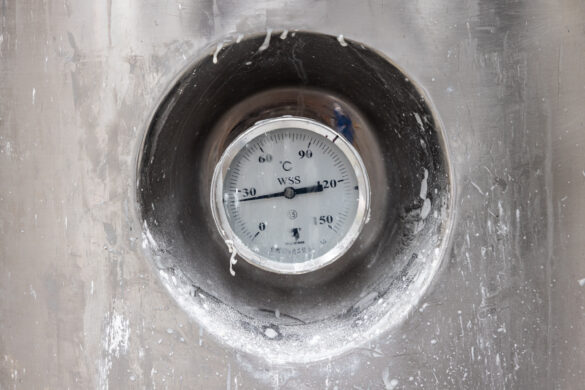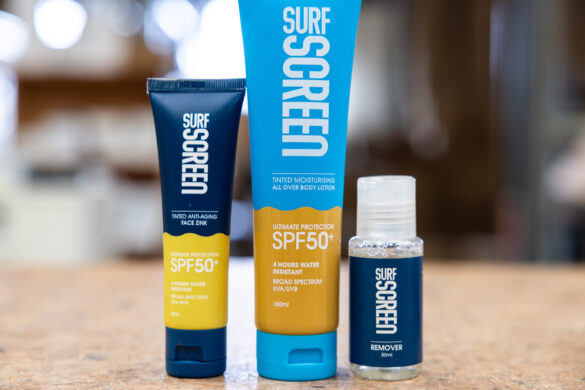Steve Morpeth epitomises the Kiwi surfer’s spirit and has built an empire around it with Sticky Johnson – New Zealand’s very own wax brand. Taira Blakely catches up with Steve in the Sticky Johnson factory in Kumeu to discover how he’s built his empire.
Hailing from a line of watermen, Steve is now 39 and has spent his whole life in the ocean. He has been surfing for almost three decades, and surfs his home breaks around Muriwai on the west coast of Auckland whenever conditions allow. That’s usually two or three times per week if he gets the balance right.
For many of us, Sticky Johnson surf wax is a no-brainer: it’s easy to apply, sticky as, lasts for ages, and it’s produced right here in New Zealand. But here’s what sets Steve Morpeth apart: Sticky Johnson wax is his own formula, which he developed, tested, and perfected over the better part of two decades, right here in Aotearoa. This wax has been Steve’s labour of love, and his hard work seems to be paying off.
Today, Sticky Johnson is a staple for many of New Zealand’s top surfers. It’s also gaining traction among elite surfers globally.
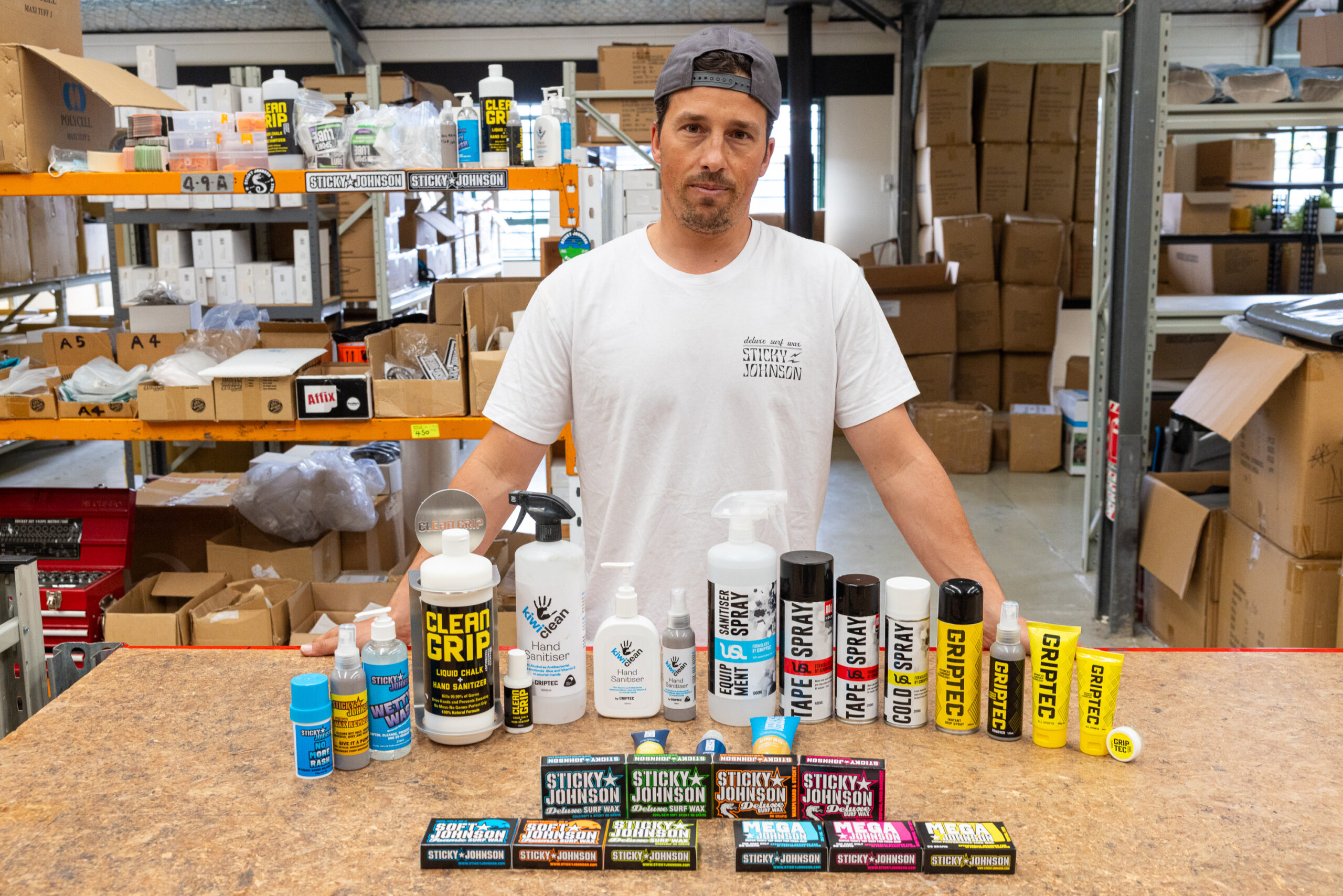
But Steve’s company has evolved into much more than just a surf wax manufacturer. It’s now serving a multitude of sports, exporting products ranging from surf wax, to leg ropes, to sunscreen, and even rugby and cricket grip throughout New Zealand and around the world.
To understand the rise of Sticky Johnson, we need to go way back to its modest beginnings, where young Steve spent his afternoons in the corner of his Dad’s factory, experimenting with ingredients and learning the trade (although Steve will tell you that he was mostly making a mess).
To understand the rise of Sticky Johnson, we need to go way back to its modest beginnings, where young Steve spent his afternoons in the corner of his Dad’s factory, experimenting with ingredients and learning the trade (although Steve will tell you that he was mostly making a mess).
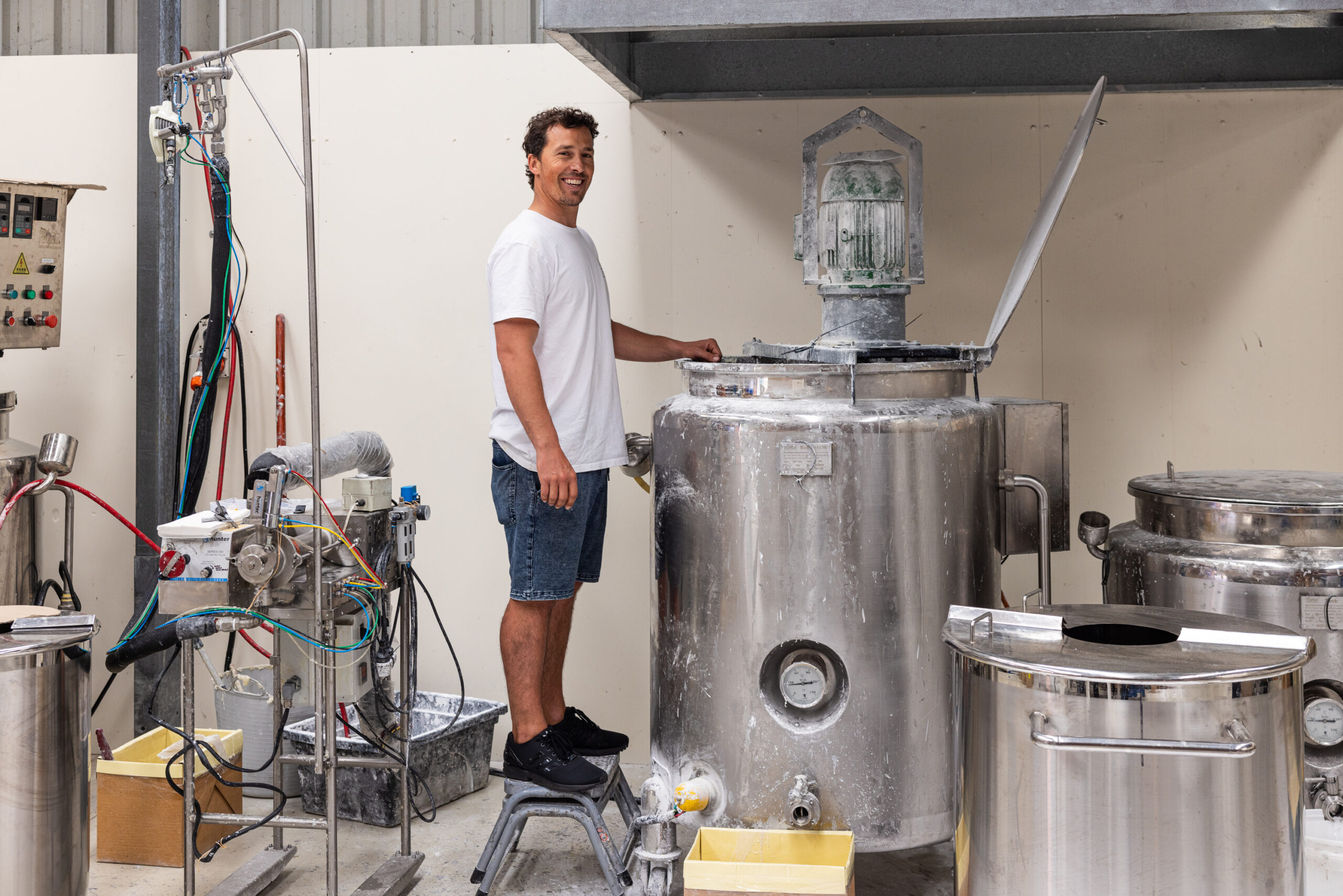
As Steve, the founder of Sticky Johnson and a chemistry whizz, walks me through his factory and warehouse, he shares the story of the birth of New Zealand’s premier surf wax brand. It all started when he was just a grom attending school in Auckland.
“At school, my main passion was making stuff and building things in design tech,” Steve explains. “I’m a practical person – so that was one of the subjects I did well in. And at that time, my old man and his business partner had a contract manufacturing company, where they would manufacture all sorts of body care products: sunscreens, shampoos, moisturisers, and different types of waxes. During school holidays, I was always helping the compounders. After hours, I would start experimenting with making different types of products. And one of them happened to be surfboard wax.”
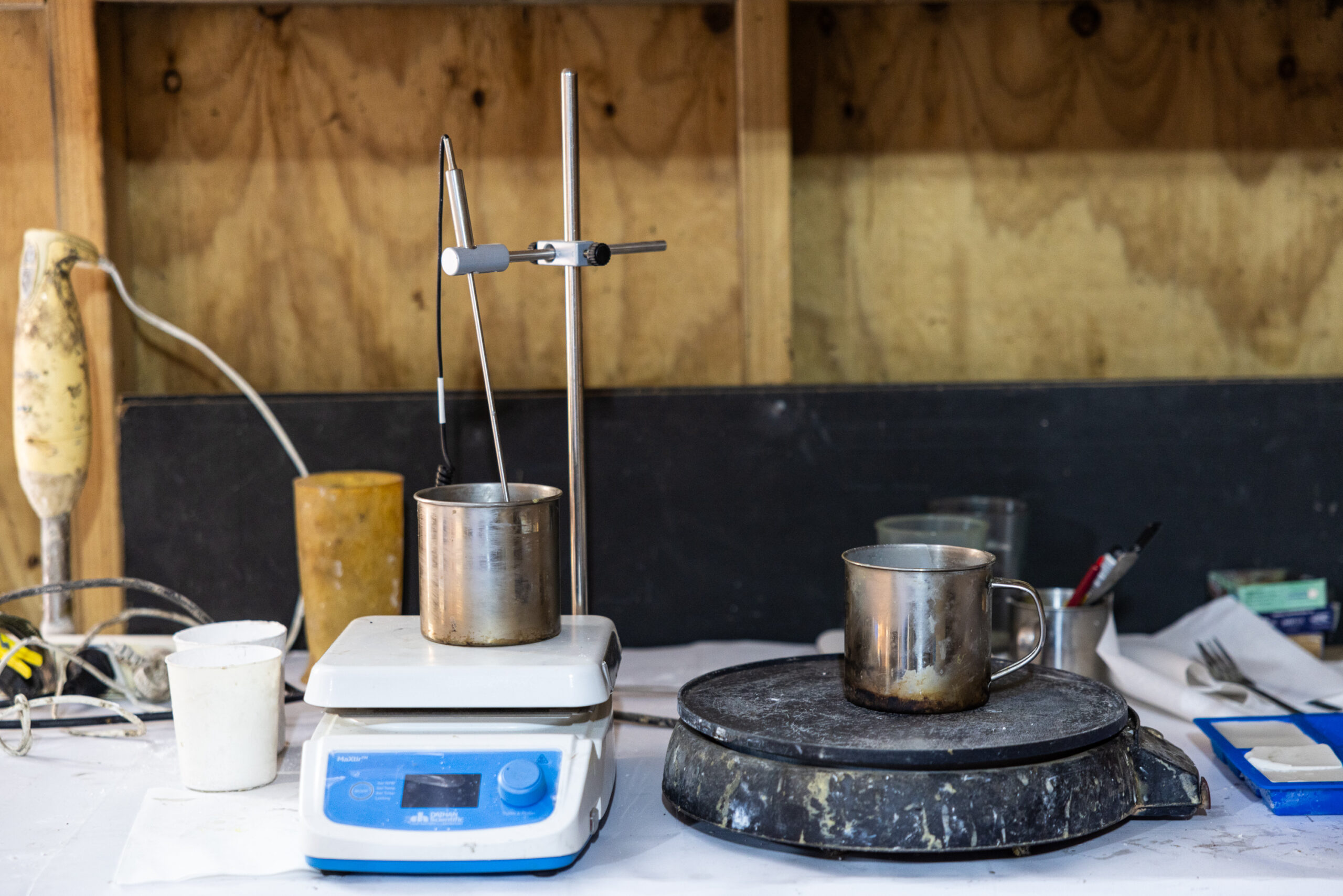
In those days, Steve was just making small batch samples and testing them whenever he had a chance to surf, usually on the weekends or over school holidays. He never seriously considered starting a brand to sell his wax. That was until Matt Groube, a top level surfer at the time, took notice of his formula and encouraged him to start selling his wax.
“I actually managed to make a pretty good surf wax formula,” Steve explains, “Matt Groube, a good mate of mine gave me the nudge to get out there and try and sell it into the local surf shops. No one else was producing a local product at the time.”
“I was only 20 and didn’t have any money,” Steve continues. “But Matt came on board and invested some money to buy raw materials and some of the machines to get it all produced.”
“He was massively influential in helping me get the ball rolling,” Steve smiles.

His product didn’t gain its national (and international) popularity overnight though – it took years of experimentation, testing, and tweaking to perfect the formula, and even more time and work to establish the business and get the Sticky Johnson name out there. This was a major challenge, especially in the face of already established brands like Sex Wax.
“It definitely hasn’t been easy,” Steve explains. “ I mean, I started in 2007 and it’s been a good 17 years of persistence. I could show you thousands of formulas that I’ve done, trial and error with testing different ingredients, different compounds, and proportions of ingredients, just taking notes and understanding what works and what doesn’t.”
“To get to where you want in perfecting these wax products, you have to put those hours in – it’s a marathon, not a sprint.”
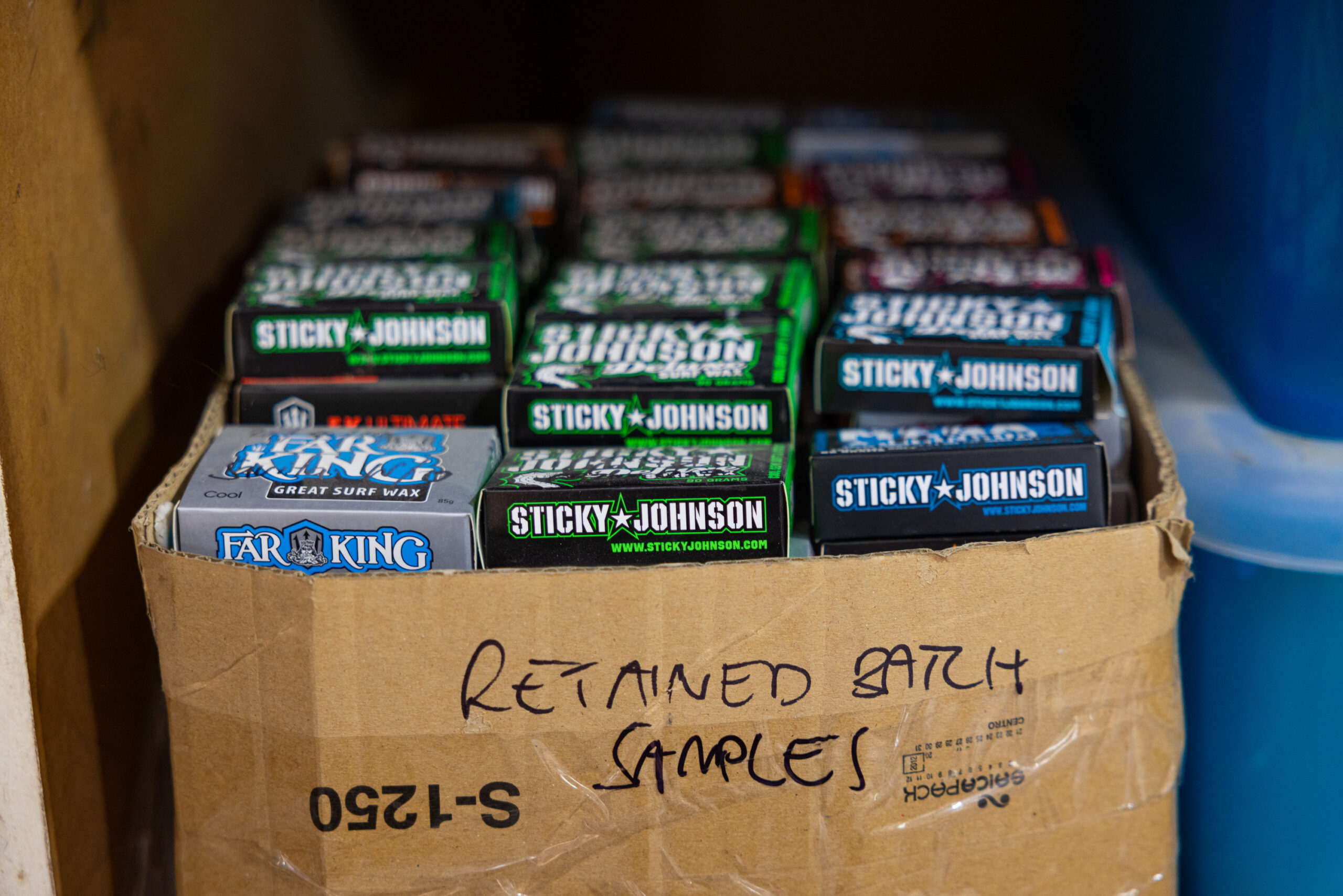
“Anyone can go on the internet and just get a basic formulation for making wax,” he continues, “but to make a quality product that provides grip for at least three, four hours, and works within all the different temperature ranges – that’s where it gets quite tricky. It’s a balancing act that takes a lot of engineering, experimentation, and testing.”
New Zealand is a small country with an even smaller surf community, which means Steve has to be extra careful to ensure his wax products are top of the line. From each shipment of raw ingredients to the final product, and in every step of the production process, he is meticulous about testing to ensure that his product is on point.
“In New Zealand, if a product’s not good, people know pretty quickly,” he explains. “We only use premium ingredients because of this, and our quality has definitely caught on.”

“New Zealand is also the perfect testing ground for surf wax products,” he adds. “In most of the country, and where I live especially, we get a lot of silt in the water. We’ve got the limestone cliffs and fresh water run-off from all the streams and estuaries, and that makes our water naturally really slippery. It’s great for our export market, because if the wax works here, it will work pretty much anywhere.”
All that hard work developing a winning formula using premium ingredients, along with frequent testing and strict quality control has certainly paid off for Sticky Johnson, which now sponsors some of the world’s best surfers in the world.
“Our first guy was Maz Quinn, an exceptional surfer who’s been amazing at supporting and promoting us,” Steve shares. “We’ve also got Billy Stairmand – the top surfer in New Zealand at the moment. He’s ripping internationally, which helps spread our brand overseas and gives us credibility. Billy’s a true professional,” he smiles. “Having those top guys using our products and helping spread the goodwill of the brand has been imperative to our growth.”
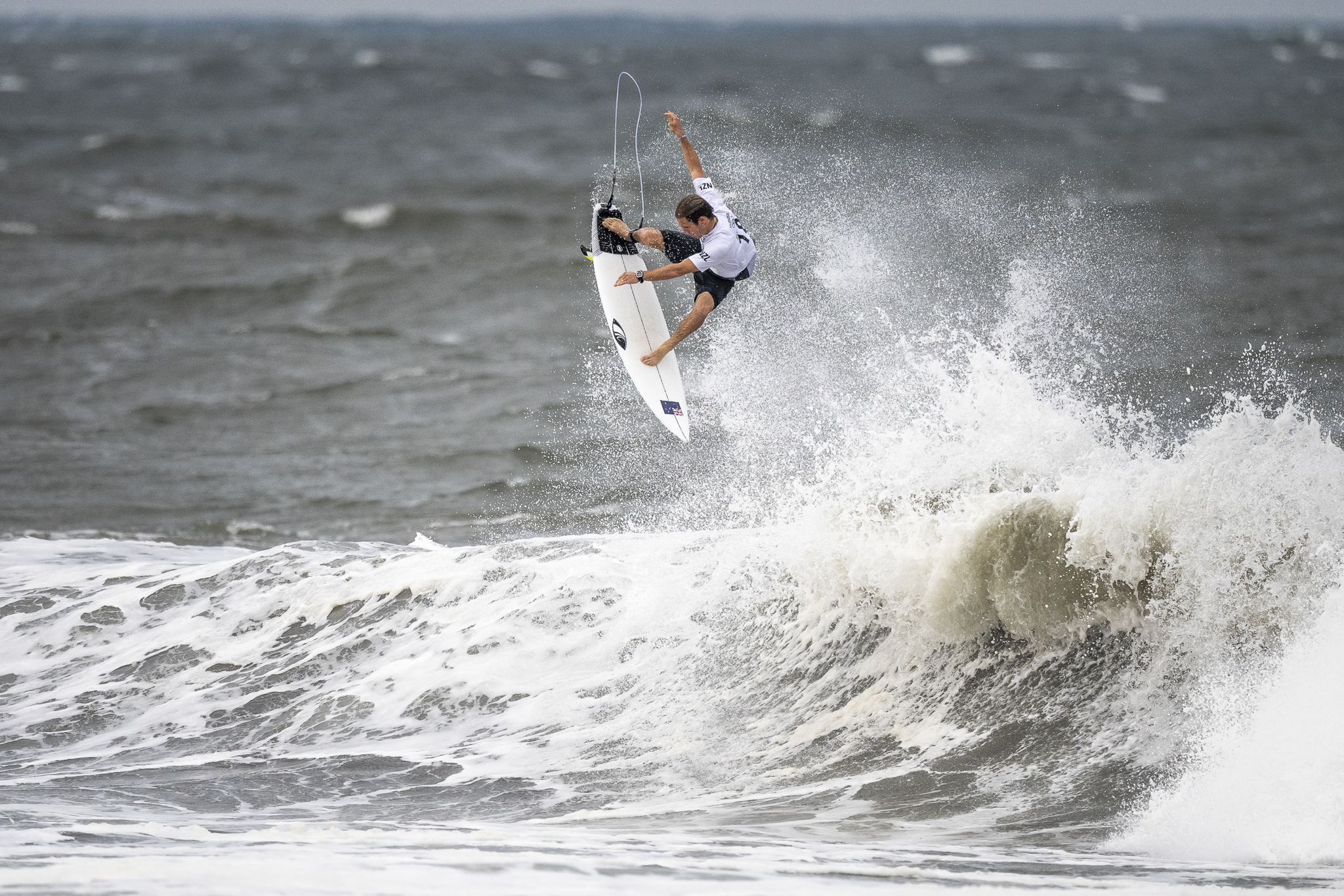
Sticky Johnson also supports top Kiwi surfers Ricardo Christie, Daniel Farr, Paige Hareb, Taylor Hutchison and a host of other New Zealand talent. It’s a real New Zealand brand supporting Kiwi surfers. We love that. So does Steve, who enjoys receiving feedback from his team.
“I remember talking to Ricardo Christie one day and he was like, ‘your wax is epic, because it’s like Sex Wax – it applies nice and beady, but it’s stickier and it just lasts a bit longer’,” Steve smiles. “I’ve always benchmarked my product off Sex Wax, but I’ve always tried to make it so it was easier to apply and stickier and longer lasting, so that was awesome to hear.”
“I’ve always benchmarked my product off Sex Wax, but I’ve always tried to make it so it was easier to apply and stickier and longer lasting.”
Many other pro surfers love it, too, including Tikanui Smith, from Tahiti. “He loves it – we send him quite a bit of wax. Same with Lee Wilson, in Bali, the Cullen kids from Australia – a lot of heavy hitters that appreciate the time and effort that we’ve put into trying to develop a formula that is world-class. It’s so cool to get their recognition.”
“We also had Britt Merrick (you’ve probably heard of his dad) using some of our wax, and he gave us a little shoutout in one of his videos. Britt Merrick’s basically the god of surfboards, so to get him saying he loves our product … it’s pretty cool.”
It’s clear that Steve has mastered the art of making quality surf wax, but, believe it or not, a byproduct of his wax-creating process has proved to be his most successful seller, and it’s not even a surf product.
He reaches for a box labeled Griptec and filled to the brim with yellow tubes of … something? I wasn’t sure. Steve holds his palms out and begins his story.
“During my time developing the surf waxes, I always had this grippy waxy residue on my hands,” Steve recalls. “I never thought of doing anything with it, but one day I realised that it could be a handy product for rugby. I played a lot of rugby in my 20s, so I took some surf wax to training one day, and we waxed up our hands and the ball. Funny enough, it worked great in the wet. Soon after, I re-engineered my surf wax into this high-friction waxy grip for your hands, and it worked really well.”
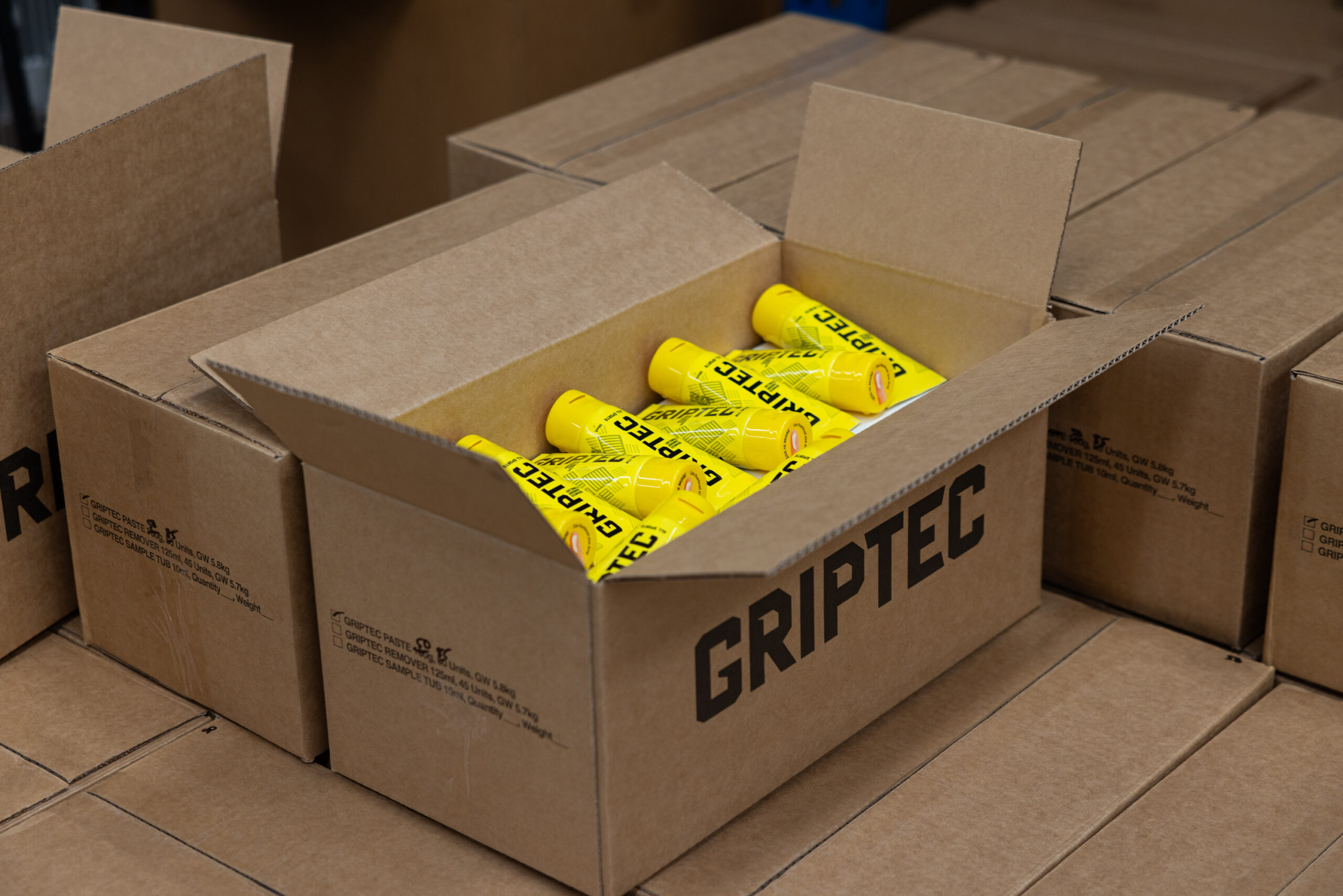
“Fortunately, one of my coaches at the time was a former All Black, and he was working with the Auckland Blues,” Steve explains. “I went and had a meeting with them one day and showed them the product, and they were stoked and gave it a trial.”
“After the first training, a few of the guys used it, and at the next training, more guys used it. Eventually, a lot of them were using and loving the product. From there, I got contacted by a physio distributor who wanted to sell it to other teams.”
“It wasn’t long before the All Blacks adopted it,” Steve recalls with a grin. “That really put us on the map. I mean, the All Blacks are the best team in the world … well, technically South Africa is, because they won the World Cup. But everyone knows the All Blacks are the pinnacle,” he laughs.
“Everyone looks at what they’re doing and how they’re changing the game, so having them using our products is the biggest credibility. We get a lot of interest from overseas around our Griptec products purely because they are using it and they’re the best.”
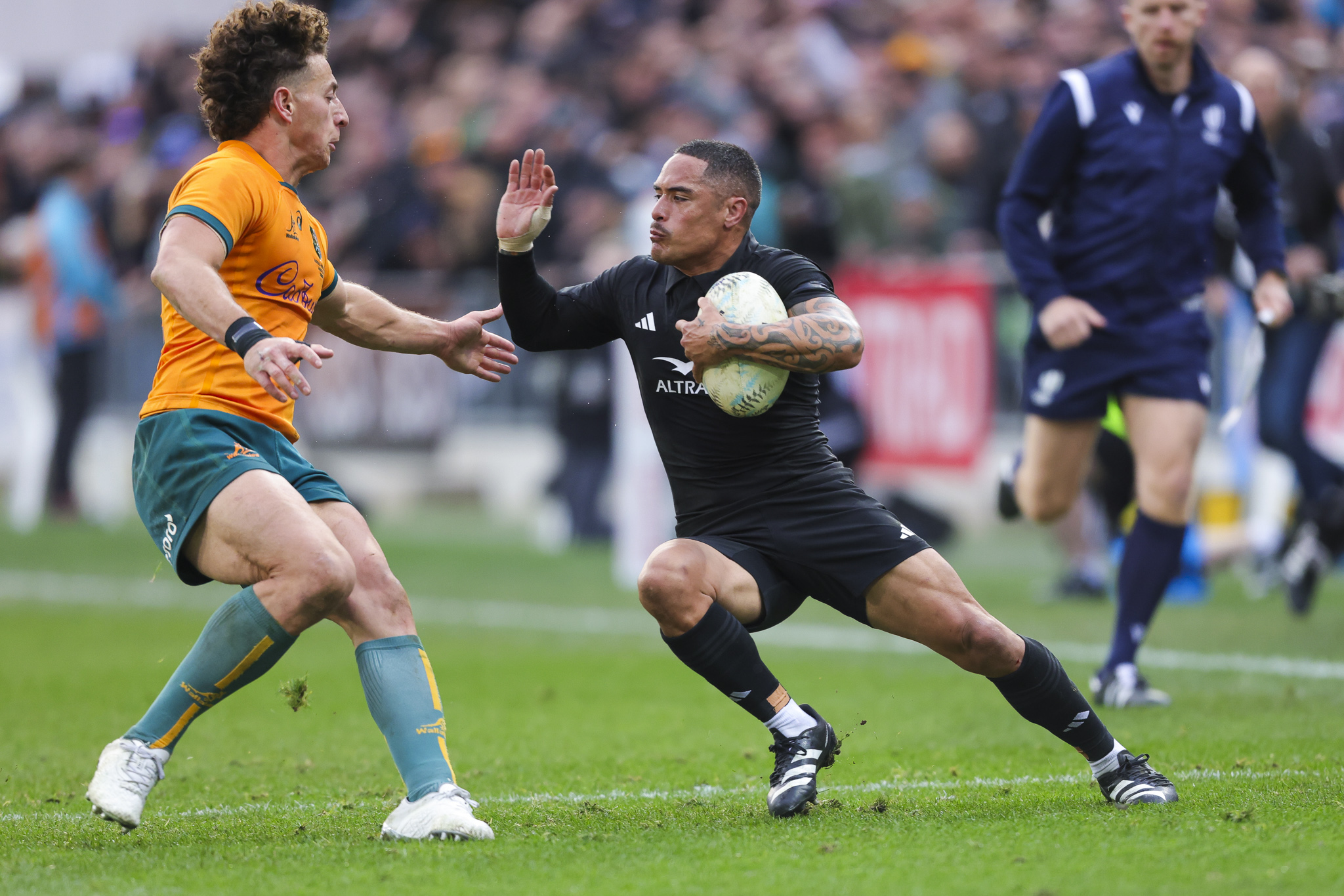
“And of course, New Zealand exports so many rugby players that all of a sudden I had Charlie Faumuina in France asking for it. Then I started getting guys in France buying it off me, and then teams from Japan, UK, Chile, South Africa, Australia – all the major rugby playing nations around the world.”
But to Steve’s surprise, that was just the beginning of Griptec’s success.
“One day we got a shoutout from the cricketer Virat Kohli, who’s like a God in India,” Steve recalls. “He’s like Kelly Slater times one hundred in terms of popularity … maybe even more than that. I think he’s got one of the biggest social media following out of any sports star in the world.”
(We checked, and as of writing, he’s got 269 million Instagram followers … crikey)
“Anyway, he did a video one day and was talking about what he has in his kit bag and how he prepares for his games. In the video he shows the Griptec product – I had no idea he was using it – but he was like, ‘I love using the product. It helps me with my batting and gives me the confidence to really go for it’.”
When Steve came into work the next day he thought he’d been hacked.
“I just had thousands of emails from India, all these people wanting to buy Griptec,” he laughs. “So yeah, that was pretty amazing. Now, I sell to the cricket industry and it’s doing particularly well in India. They use it for batting, especially when they’re out in the 40 degree heat for hours on end. It just gives them that extra bit of grip and confidence to be able to perform.”
When Steve came into work the next day he thought he’d been hacked. “I had thousands of emails from India, all these people wanting to buy Griptec.”
Currently, Steve sells Griptec to pretty much every professional rugby team in New Zealand, many National Rugby League teams in Australia, and dozens of cricket teams and top cricketers around the world. Griptec has also just broken into the Australian Football League. We reckon his product could be useful for a variety of other sports too, it’s just a matter of time before it catches on.
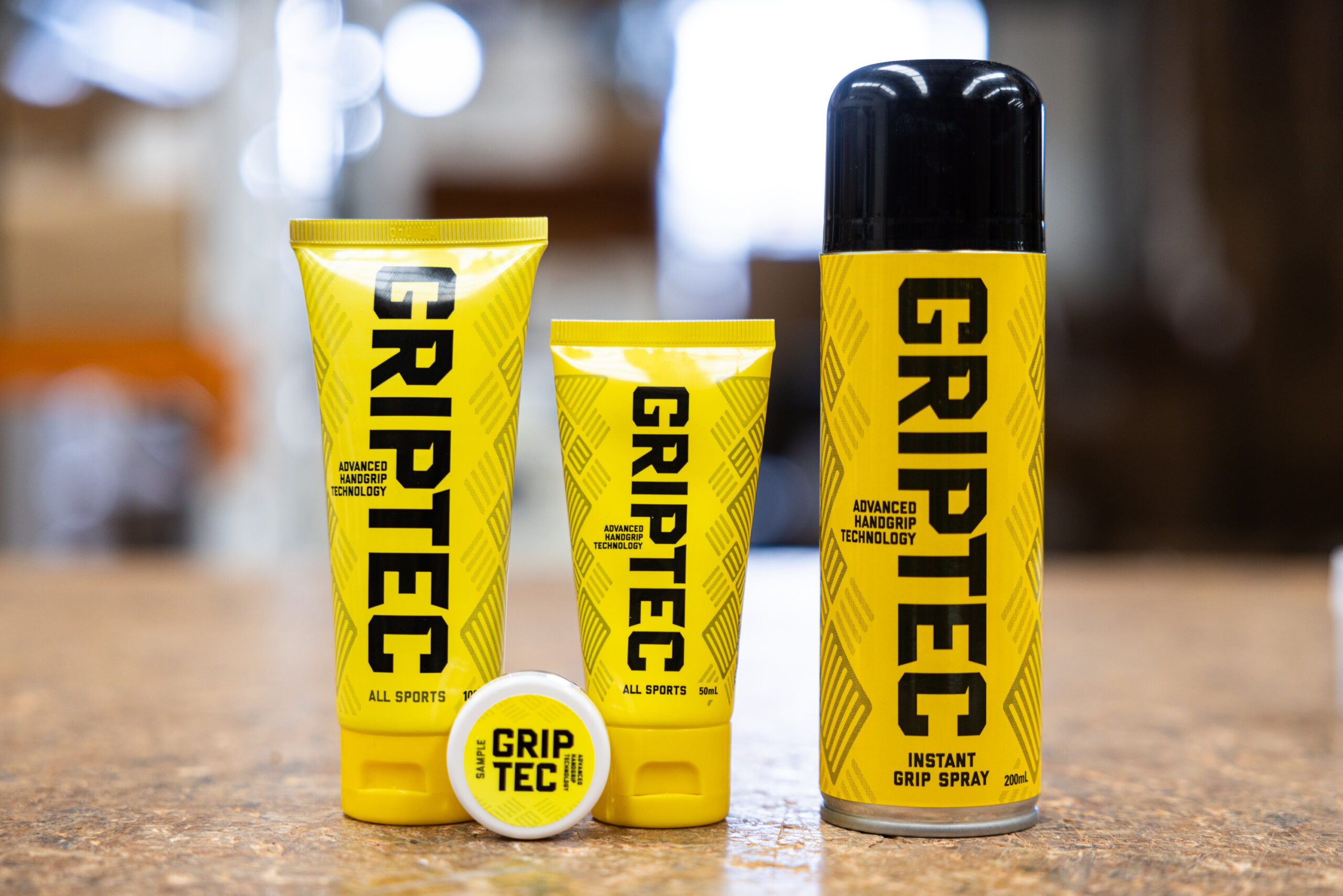
“Honestly, the Griptec product has been a bit of a saviour for us,” Steve reveals. “The surf industry is so small and competitive, and it’s hard to make a margin, so it’s good to be able to sell to those other industries where there’s a bit more money. It’s my main earner for sure.”
While Griptec’s popularity has recently soared across the global sporting world, it hasn’t all been smooth sailing for Steve and Sticky Johnson. Three devastating flooding events at the factory in Kumeu have destroyed stock and equipment, and even threatened to sink the business. The worst followed a stretch of rapid rainfall during the evening of August 30, 2021 – up to 90mm in a single hour – that struck rapidly and without warning.
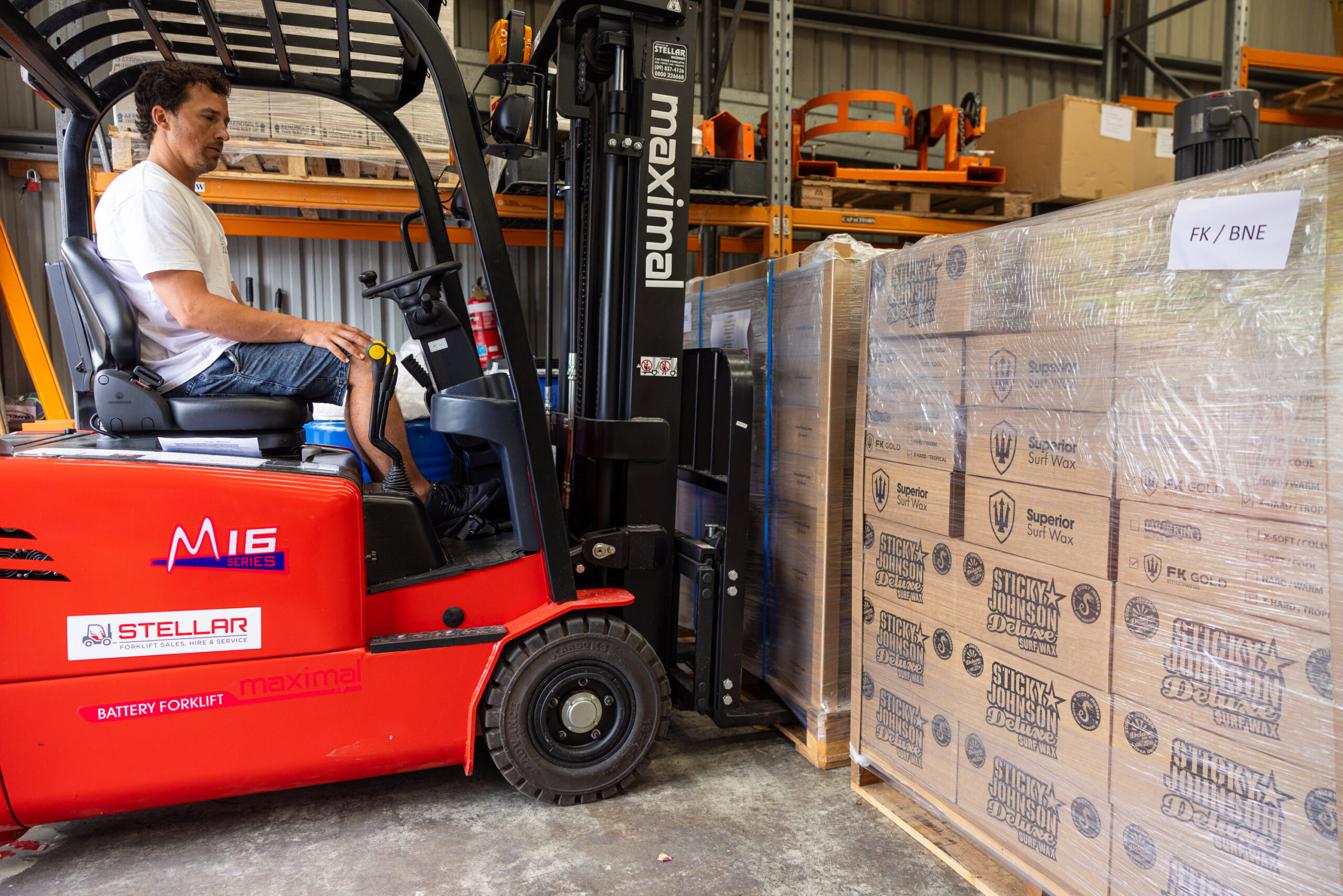
“I’d been at work that night,” Steve recalls. “We had an export order to South Africa, and my partner came in and helped me build the whole pallet. We left at about 7:30 pm, and as I was locking the door, lightning and heavy rain set in and it just rained all night. And then at six in the morning, I got a phone call from my wife’s sister, and she was like, ‘are you guys alright? Kumeu’s underwater’.”
“And I was like, ‘shit’. And then I kind of thought, oh, we’ll be alright where we are. It’s not that low lying.”
“But then I rang a friend of mine who lives in Kumeu, and he was like, ‘no, your whole area is underwater’.”
“So I threw my wetsuit on, jumped in the four-wheel-drive and drove into Kumeu,” Steve explains. “Sure enough, the whole area was flooded. Obviously, I knew there was a risk of electric shock from live cables in the water, so I chucked my shoes on and trudged through the water.”
“So I threw my wetsuit on, jumped in the four-wheel-drive and drove into Kumeu. Sure enough, the whole area was flooded. Obviously, I knew there was a risk of electric shock from live cables in the water, so I chucked my shoes on and trudged through the water.”
Steve holds his hand out just above his waist. “It was probably about this deep, with huge currents. It was pretty dangerous.”
“I remember opening the door to my factory and being in complete shock, seeing everything underwater. My boxes were just floating past me. The big pallet that we’d built the night before was soaked and destroyed. There were computers and printers, just floating. It was pretty heartbreaking to see all that. All I could do was try to rescue as much stuff as possible.”
“And then two days later, we went into covid lockdown – it was pretty hectic.”
“The recovery side was tough too, because once the water receded, there was just silt and mud bloody everywhere – in every product, in every little corner, and every little crevice, and it was just impossible to clean it all.”
“And then once we were allowed to go back into work, all of a sudden the landlord comes in and is like, ‘right, you’ve got to get all your stuff out. We’ve got to rip all the walls off the building to dry it all out’. It was just a nightmare run of problem after problem.”
“I remember opening the door and being in complete shock, seeing everything underwater. My boxes were just floating past me. The big pallet that we’d built the night before was soaked and destroyed. There were computers and printers, just floating. It was pretty heartbreaking to see all that. All I could do was try to rescue as much stuff as possible.”
Steve spent the next four months dealing with the aftermath – cleaning and restoring the factory, fixing machinery, and dealing with insurance, which proved to be the peskiest part of the whole ordeal.
“The insurance made it so hard,” Steve reveals. “They made us jump through so many hoops and prove every expense. I think I spent two or three months nonstop trying to gather the evidence and information for the insurance company.”
Steve says the journey “builds resilience.” “You learn to deal with it, and you just realise, man, someone else has always got it worse. You just got to stick your head down, bum up and get it sorted.”
“Looking back, I was actually incredibly fortunate during that time because I had a group of about 15 to 20 surf mates from Muriwai where I live. In the moment, I was in shock – I had no idea what to do. But they all just dropped their shit and came in to work and just helped clean and tidy the space,” he smiles. “It was amazing having that crew of legends that are willing to drop anything to come and help out.”
Since then, Steve’s resilience was further tested when his factory endured two more severe flooding incidents. But drawing from the lessons of the initial disaster, he managed to salvage the majority of his stock.
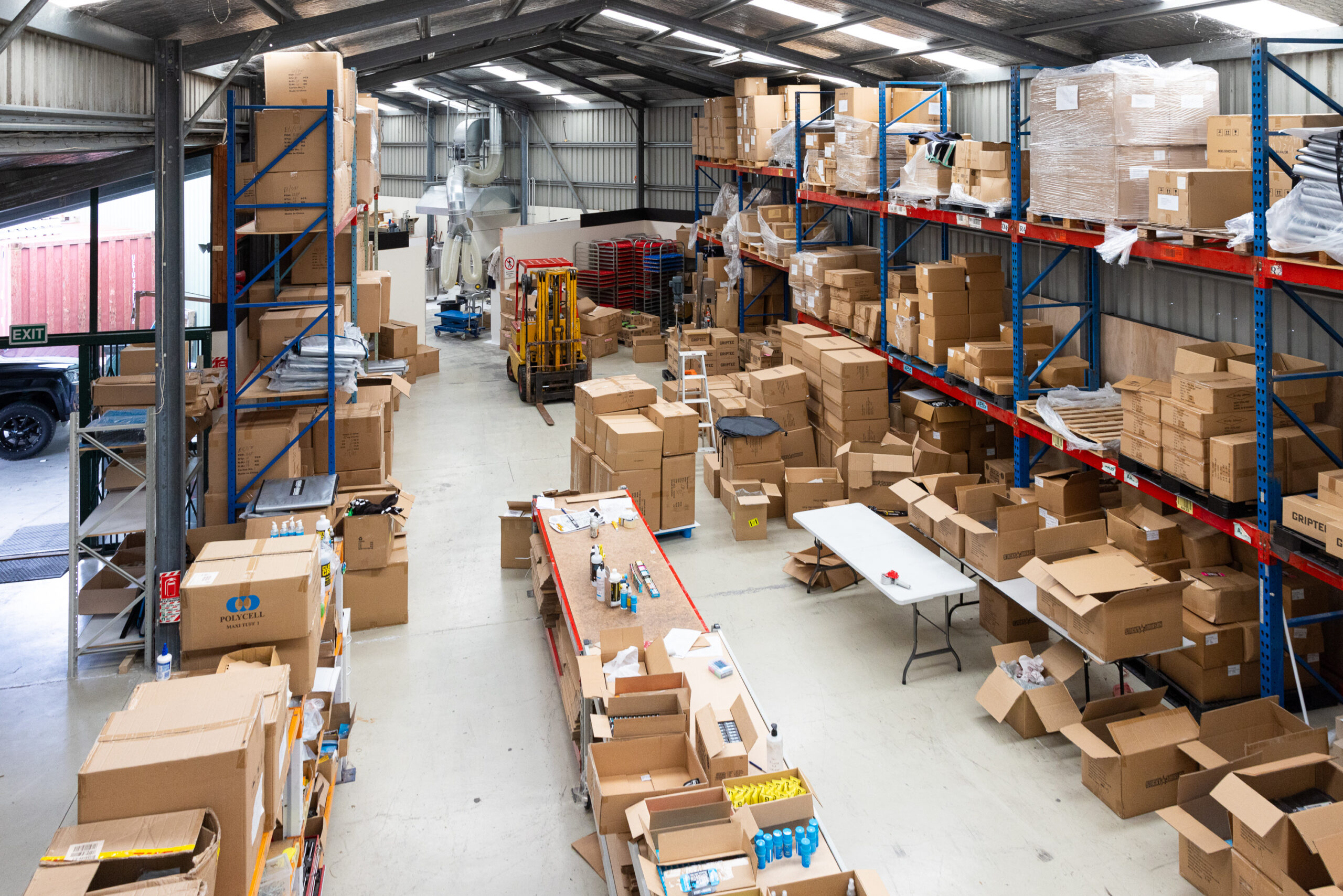
Steve is used to roadblocks like these – and if there’s anything I’ve learned about him, it’s that they’re not going to stop him.
Starting out as a local manufacturer in New Zealand, Steve was subjected to the brutality of the tall poppy syndrome. He often felt he was paddling furiously against the tide just to stay afloat. But he reckons these kinds of challenges motivated him to keep going.
“New Zealand definitely still has that underbelly of the tall poppy syndrome where it seems like some people just don’t want you to succeed,” he shares. “When I started out, the headwinds I endured were pretty crazy – people fobbing me off and trying to kick me down. What they didn’t realise is that it just fueled me to work harder and make my product better.”

“I’ve got the type of personality where I can’t stop something until I’ve absolutely mastered it,” Steve continues. “I spent a good 10-12 years of relentless testing and formulating to prove that we aren’t going to fail, we’re going to be successful.”
“New Zealand definitely still has that underbelly of the tall poppy syndrome where it seems like some people just don’t want you to succeed. When I started out, the headwinds I endured were pretty crazy – people fobbing me off and trying to kick me down. What they didn’t realise is that it just fueled me to work harder and make my product better.”
New Zealand is certainly a tricky place to start a small manufacturing business. Distributors don’t like dealing in small quantities, forcing Steve to forward buy much of his ingredients. On top of all that, Steve has struggled with provisional taxes, tariffs, and high freight costs, which are a hindrance when it comes to breaking into the international market. But since the New Zealand market is so small, this is where he sees the greatest opportunities for future growth. About 60 percent of his product hits the export market, and Sticky Johnson wax is now available for purchase in 13 different countries. He reckons that number will soon increase.

“Looking forward,” Steve continues, “there’s even more opportunities for growth in our export markets. We’ve just got to keep chipping away at being the premier brand in the market. Some of the other brands have been around since the ’70s. We started in 2008 and already have a pretty good market share, so we’re just hoping to keep growing, keep improving the business to the point where we get a lot more traction internationally, leading to more exports, more people, and more turnover.”
Steve is certainly optimistic about the future in spite of all the challenges he’s faced. We feel the same way. “We’ve got all the best professional sports people in the world,” Steve grins. “My sales rep and I use it, too.”
It may have taken years to build, but Steve is now witnessing the fulfillment of his vision and the fruits of his hard work. We’re pretty stoked about that, because having a New Zealand-owned business thriving in the surf industry with a proven high-performing product speaks volumes for our community … and it’s bloody great wax.



